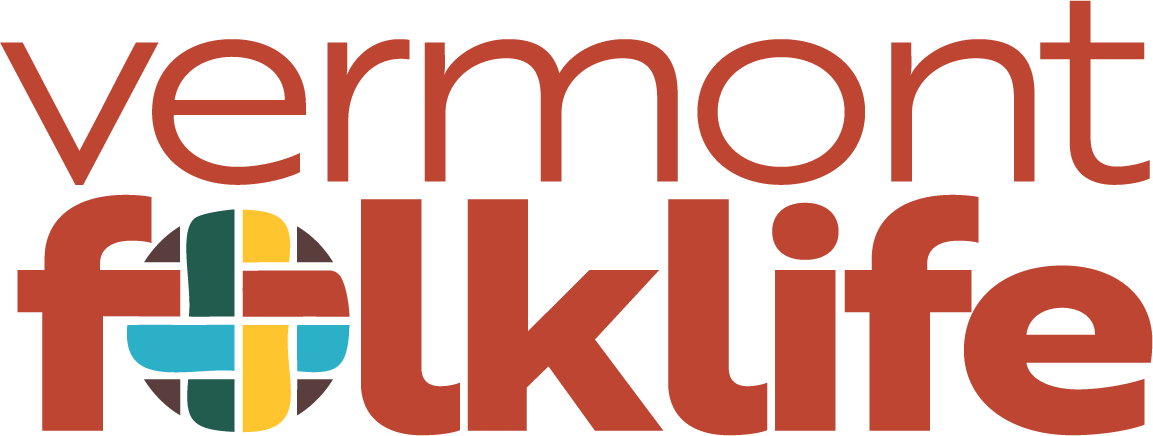Program 4: "Hunt Like an Indian"
Hunters describe how to 'track' a deer through the woods. The technique requires extreme focus, a deep knowledge of deer habitat and behavior, and the ability to recognize deer sign. This degree of engagement is at the heart of many hunters? drive to enter the woods each fall.
Transcript:
Gregory L. Sharrow
Deer Stories is a documentary series from Vermont Folklife Center Media. It explores hunting from an insider’s point of view and is drawn from interviews with hunters from around Vermont. In this show hunters talk about the techniques for tracking deer.
Reginald Kribstock
You pick a track. After years in the woods, you know, you’ll know it’s a 200-pound animal. And you soon, very soon learn if he’s the dominant buck in the area by his scrapes, the way other deer treat him, the way he hooked, marked his area, where they pee, leave their scent. By staying with an animal for two or three days you knew what degree of rut they were in and after enough years of experience you knew what type of mistakes he might make. You learn where the pockets of doe were, so if he went over the top of a mountain here and he headed across the valley over there, you knew where he was headed to check out that bunch of doe up there. It’s not just going out and trying to harvest an animal, to kill an animal. You learn about these animals and you learn to respect them.
Shane Benoit
You’ve gotta visualize your footage ahead of you, say, three steps. You glance, you glance down and you gotta remember your steps. You know, you gotta walk softly. If you come down with your heel first you’re gonna snap branches, so you gotta use your toes. And all the time you’re eyes are sweeping and you’ve got your first peripheral vision and you’re avoiding the brush and you’re avoiding the limbs. You’re stepping on stones sometimes or moss or whatever. It’s quiet. ‘Cause I’m trying to sneak up on them guys right there: One little snap and they’re gone.
Mark Scott
A deer will tell you everything it’s doing with the tracks. A doe and a buck are built entirely different and does like to walk dainty. If you ever watch a doe in the woods, they walk on their toes, with one foot in front of the other and they have a short step, where, if you watch a buck walking through the woods, they walk—what I say, I just kind of feel like bow-legged. And they tend to slam their feet down. And so once you put that together and once you start following tracks you very quickly can tell the buck from the doe.
Shane Benoit
Part of tracking is common sense, a lot of it is, it’s what the weather’s done, you know? If it’s snowing out and you see a track there and there’s no snow in it, I think it’s smoking-hot fresh. Because a lot of people have a problem when it’s warm weather and the snow’s melting and they look at the track and it looks like it’s five-days old, but actually all it is, maybe just a couple hours old. It’s, you know, tracking is a lot of common sense.
Mark Scott
You’ve gotta be in tune with the woods. You can’t think about anything, but put yourself into the mode to being a predator. You’re stalking and you want to see it, so you can’t be thinking of friends back home, you can’t be thinking that your feet are cold or that you’re wet. And there comes a very moment where you really gotta be on your toes, where they will tell you from their tracks that they’re close. To me, that’s the excitement: to be able to have that experience I would do anything in the world for.
Stan Redlon
I don’t know, I think I’m always hunting. I always keep an eye out on the ground where I can, wherever there’s bare ground, I’ll always look to see what’s going on and I always pay attention to trails and it’s part of me, it’s part of my blood. I have to hunt. I have to fish. In the fall of the year or late summer, the first cold nights, it’s like a switch: it’s time to get into the woods, it’s time to harvest. I found out about, oh, it was probably about eight years ago that I’m part Abenaki and I didn’t know that and I might only have a little bit of Abenaki in me, but it’s pretty strong. [LAUGHS.] And it’s a neat thing. I am a true Vermonter, through and through. [LAUGHS.] A real Vermonter through and through.
Gregory L. Sharrow
You’ve been listening to Vermonters Shane Benoit of Middlesex, Mark Scott of Barre Town, and Stan Redlon of Strafford. Deer Stories was produced by Erica Heilman and Gregory Sharrow for the Vermont Folklife Center of Middlebury, Vermont. I’m Gregory Sharrow.


